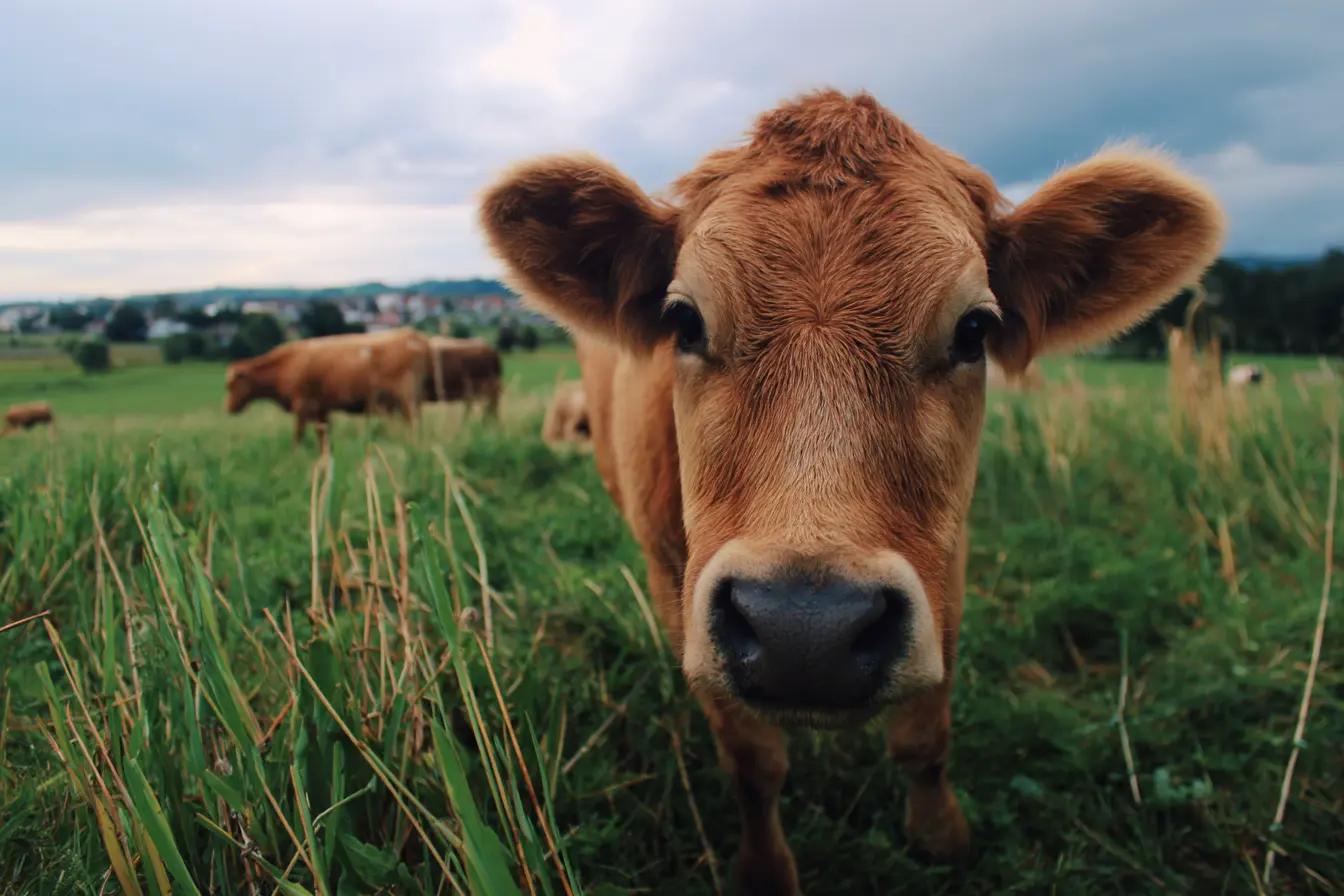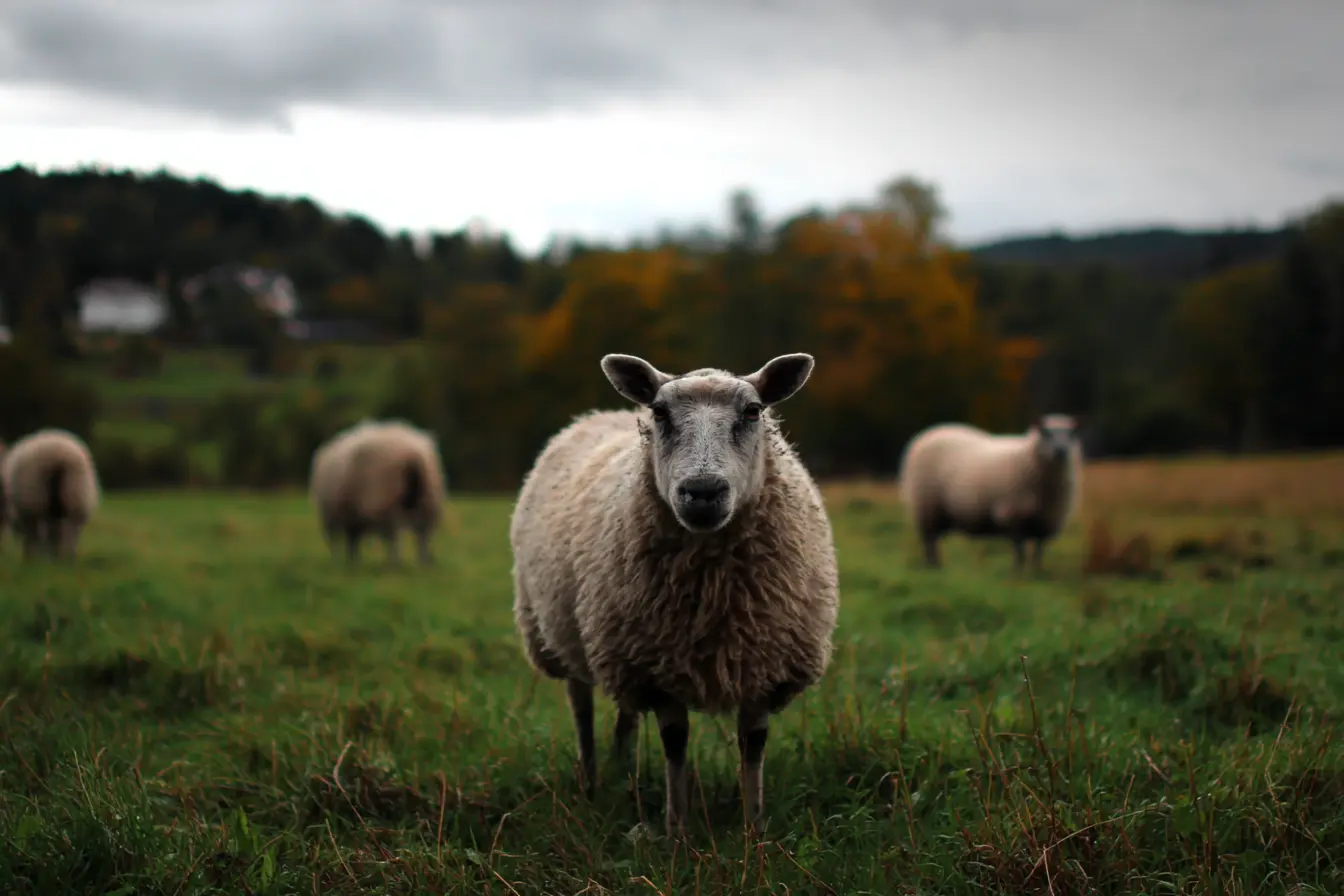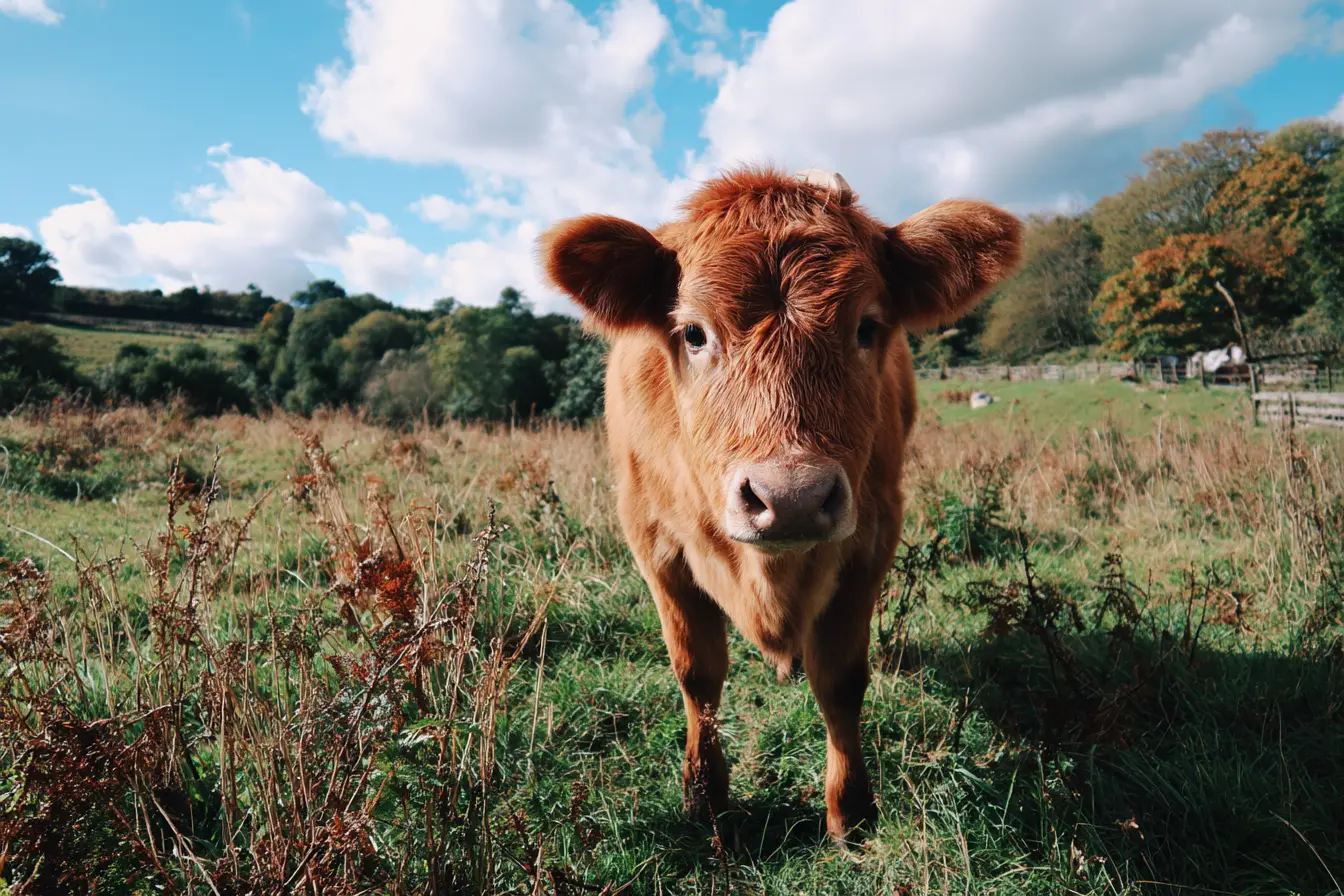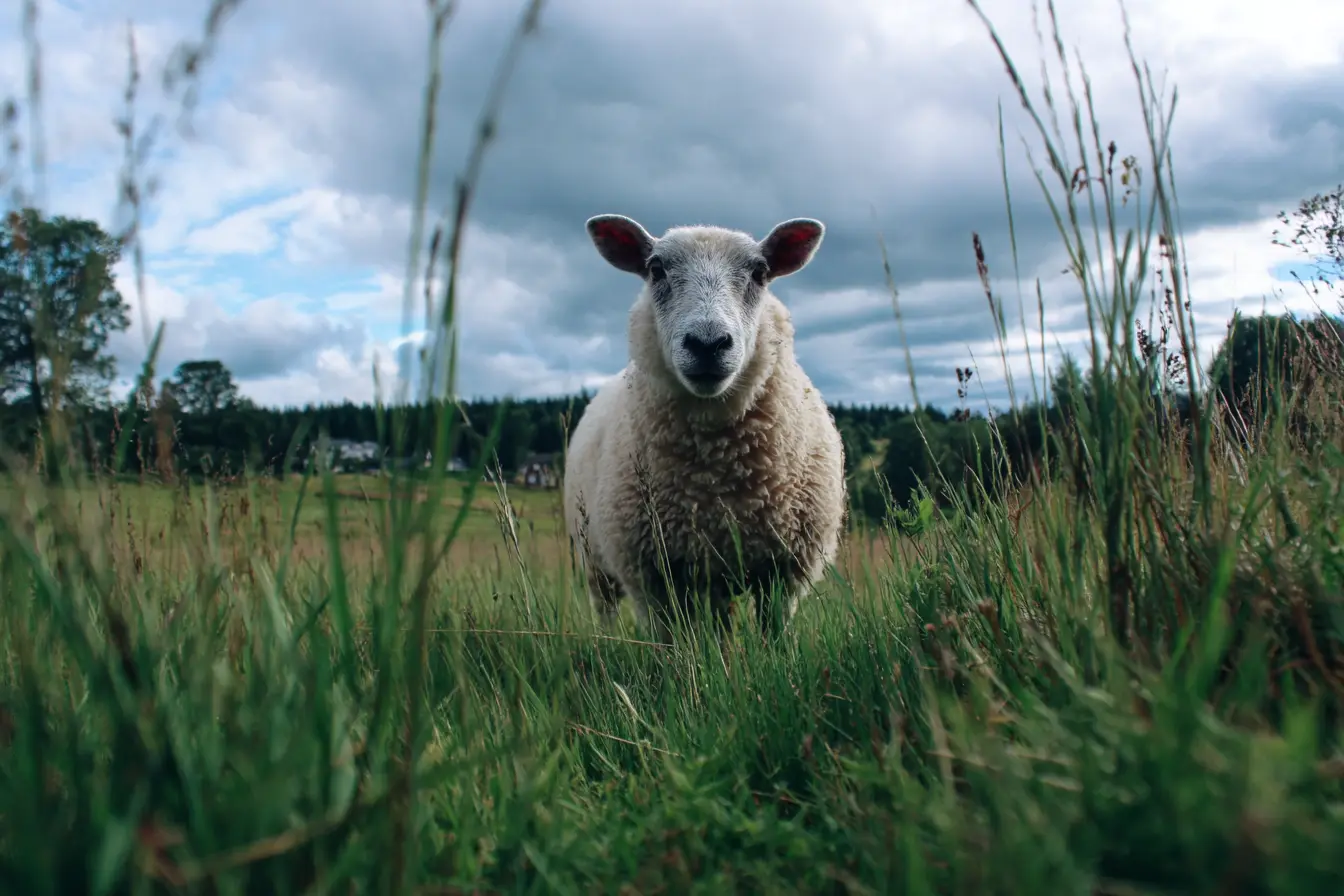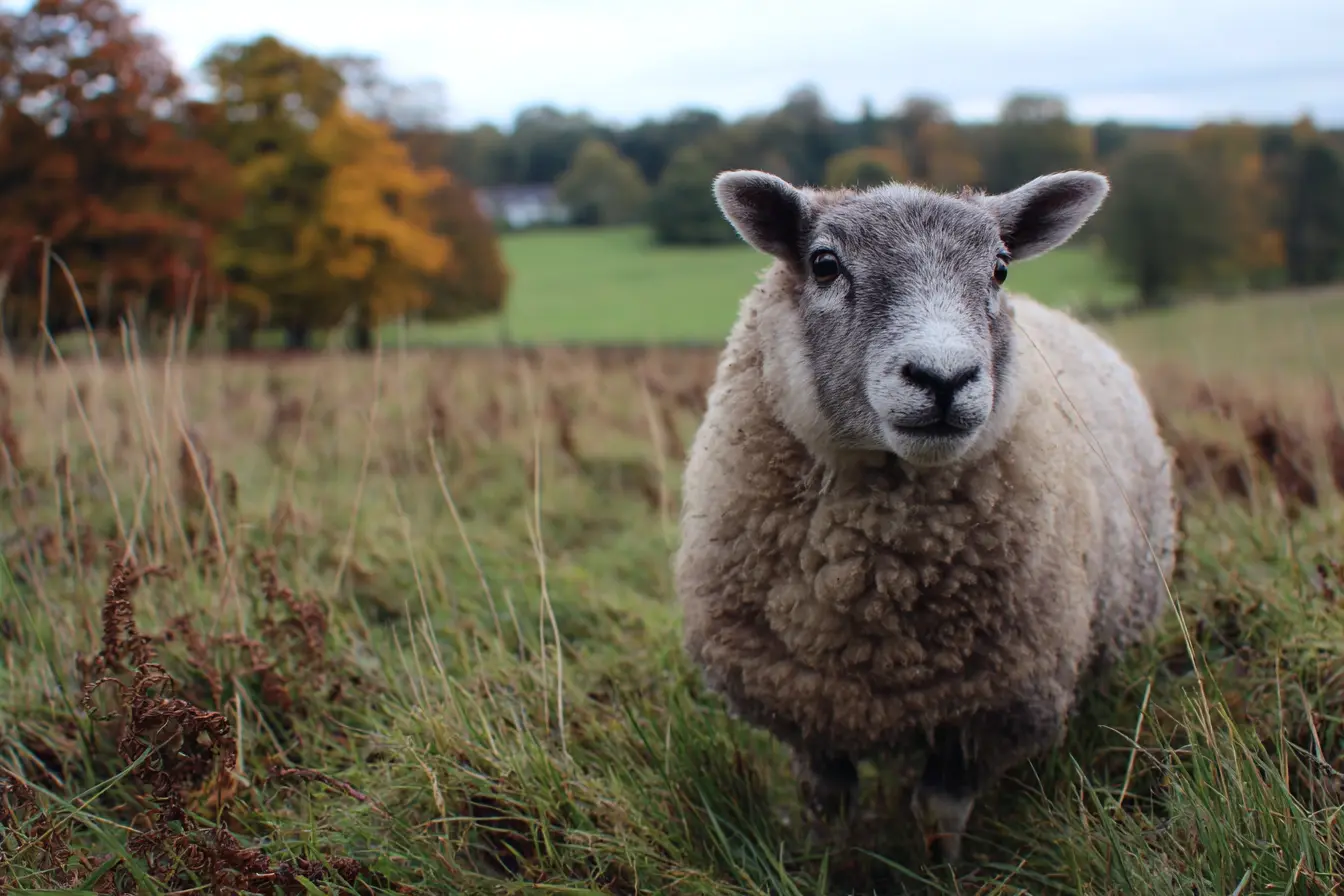
Bluetongue in Livestock in the UK (July 2025)
Bluetongue is a serious viral disease affecting ruminant livestock, including cattle, sheep, goats, deer, and camelids (such as alpacas and llamas). It is caused by the Bluetongue virus (BTV), belonging to the Orbivirus genus. The disease is notifiable, meaning any suspected cases must be reported immediately to veterinary authorities.
Bluetongue is primarily transmitted by biting midges of the Culicoides species—especially C. obsoletus and C. pulicaris, which are common in the UK and Northern Europe.
How Bluetongue Affects Livestock
Sheep
Sheep are the most severely affected:
- High fever
- Swollen head, lips, tongue, and ears
- Mouth ulcers and excessive salivation
- Lameness from foot lesions
- Respiratory distress in serious cases
- High mortality, especially in susceptible breeds
Cattle
Cattle usually show milder symptoms and can act as silent carriers:
- Mild fever, mouth swelling
- Red mucous membranes
- Lameness and inflammation around the hoof (coronitis)
- Often asymptomatic but capable of spreading the virus
Goats
Goats are less clinically affected:
- Usually subclinical (no visible signs)
- Occasionally mild fever, oral lesions, or lameness
- Still part of the transmission cycle
Camelids (Alpacas, Llamas)
Camelids generally show mild or no signs, but infection can occur and they can carry the virus.
Diagnosis and Reporting
Diagnosis is made through:
- Clinical inspection by a vet
- Confirmatory laboratory testing (PCR and serology)
- Mandatory reporting to the Animal and Plant Health Agency (APHA)
A Brief History of Bluetongue in the UK
The UK had outbreaks of BTV-8 in 2007-2008, resulting in large-scale vaccination campaigns and trade restrictions. In 2024, BTV-3—a serotype more commonly found in Northern Europe—was first detected in southern England. Since then, cases have continued to escalate in 2025, marking the most significant resurgence in over a decade.
Bluetongue in the UK: Current Status as of July 2025
Where Are the Current Cases?
As of mid-July 2025, the following situation applies:
- Confirmed outbreaks of BTV-3 in cattle and sheep across southern and eastern England, including:
- Kent, Sussex, Essex, and Norfolk — the hardest-hit counties.
- Cases expanding westward, with sporadic detections in parts of Wiltshire, Somerset, and Gloucestershire.
- Suspected cases under investigation in Derbyshire and Lincolnshire.
- No current confirmed cases in Wales, Scotland, or Northern Ireland, but high risk of spread due to midge movement.
The UK is actively monitoring midge populations, with intensified surveillance of Culicoides species in high-risk regions. This is critical to predict and mitigate the risk of further spread, especially as climatic factors can influence midge dispersal patterns across borders.
Who Should Be Most Concerned?
- Sheep keepers in England, especially in southern and eastern counties, due to the high mortality risk.
- Cattle keepers must remain vigilant as cattle can spread the virus asymptomatically.
- Goat and camelid owners, especially those near the English coast, should monitor animals for signs and follow movement controls.
- Veterinarians and livestock hauliers should be aware of the current movement restrictions to avoid unintentional spread.
- Exporters should note severe disruption to trade, especially of live animals and germinal products.
Disease Control Measures
Restricted Zone
- Since 1 July 2025, the entire territory of England is under Bluetongue Restricted Zone status.
- Movement into Scotland, Wales, and Northern Ireland is highly restricted, requiring testing and licensing.
Movement and Trade Controls
- Within England: No testing or licensing required for movement.
- To Scotland, Wales, and Northern Ireland:
- Movement only allowed under strict licensing
- Negative pre-movement tests required
- Vaccination status must be declared
- Exports to the EU remain suspended for live animals from England, with possible exceptions for germinal products under strict conditions.
- Farmers should regularly check the Defra Bluetongue Movement Checker for updates.
Special Provisions for Welsh Farmers
In Wales, red markets have been established, allowing livestock movements into designated abattoirs under controlled conditions. This targeted measure is designed to reduce the economic impact on Welsh farmers by permitting local slaughter despite the surrounding restrictions. Animals destined for these red markets must comply with veterinary oversight and are subject to strict biosecurity protocols.
Prevention and Control Strategies
Vaccination
- BTV-3 vaccines are available and recommended, particularly in high-risk counties.
- Vaccination reduces clinical signs and virus shedding but may not prevent infection entirely.
- Farmers must keep detailed vaccination records.
Vector (Midge) Control
- Housing livestock during peak midge hours (dawn and dusk)
- Use of approved insecticides and repellents
- Fine mesh barriers in livestock housing
- Avoiding unnecessary evening grazing in high-risk areas
- Ongoing midge surveillance is helping identify areas of increased risk, enabling tailored advice on vector control for farmers in different regions.
Biosecurity Measures
- Quarantine new arrivals
- Monitor animals daily for clinical signs
- Reduce livestock movements during peak vector seasons
- Immediate veterinary reporting of suspected cases
Implications for Livestock Keepers
- Sheep keepers should be aware of the high fatality risk and are advised to prioritise vaccination and active surveillance.
- Cattle keepers should be alert to the risk of their animals acting as silent carriers and follow testing and vaccination protocols.
- Goat keepers should not overlook the disease, even with milder signs, and implement monitoring and basic precautions.
- Camelid keepers should recognise the risk of their animals being silent carriers and maintain good biosecurity standards.
- Welsh farmers can take advantage of red market options to mitigate some of the financial losses due to restrictions.
Summary
As of July 2025, Bluetongue (BTV-3) presents a serious, rapidly evolving threat to UK livestock — especially in southern and eastern England. With all of England under restriction, strict movement controls, vaccination, vector control, and targeted market interventions like red markets in Wales are critical to containing the outbreak.
The UK’s close monitoring of midge populations, combined with veterinary vigilance and farmer cooperation, is key to preventing further spread.
All livestock keepers must remain alert, follow official guidance, and report any suspicious cases immediately.
Disclaimer: Information correct as of July 2025. For up-to-date advice, always consult Defra and APHA.
Vets near you
Speciality vets
- Aquatics vet specialists
- Birds vet specialists
- Camelids vet specialists
- Cats vet specialists
- Cattle vet specialists
- Deer vet specialists
- Dogs vet specialists
- Equines vet specialists
- Exotic vet specialists
- Goats vet specialists
- Pigs vet specialists
- Poultry vet specialists
- Sheep vet specialists
- Small Mammals vet specialists
- Wild vet specialists
